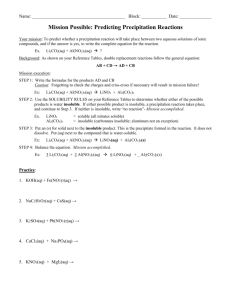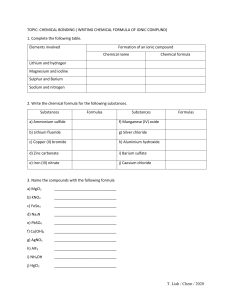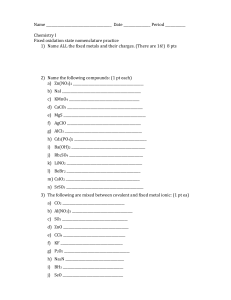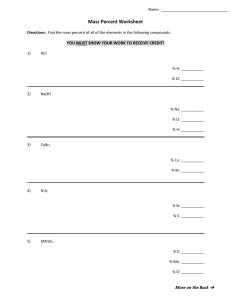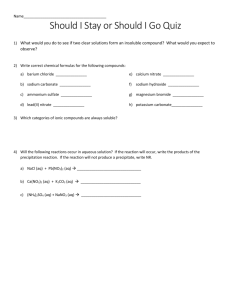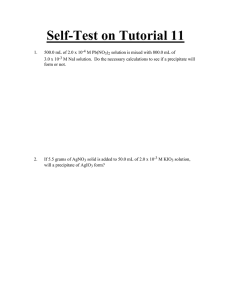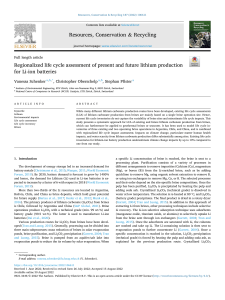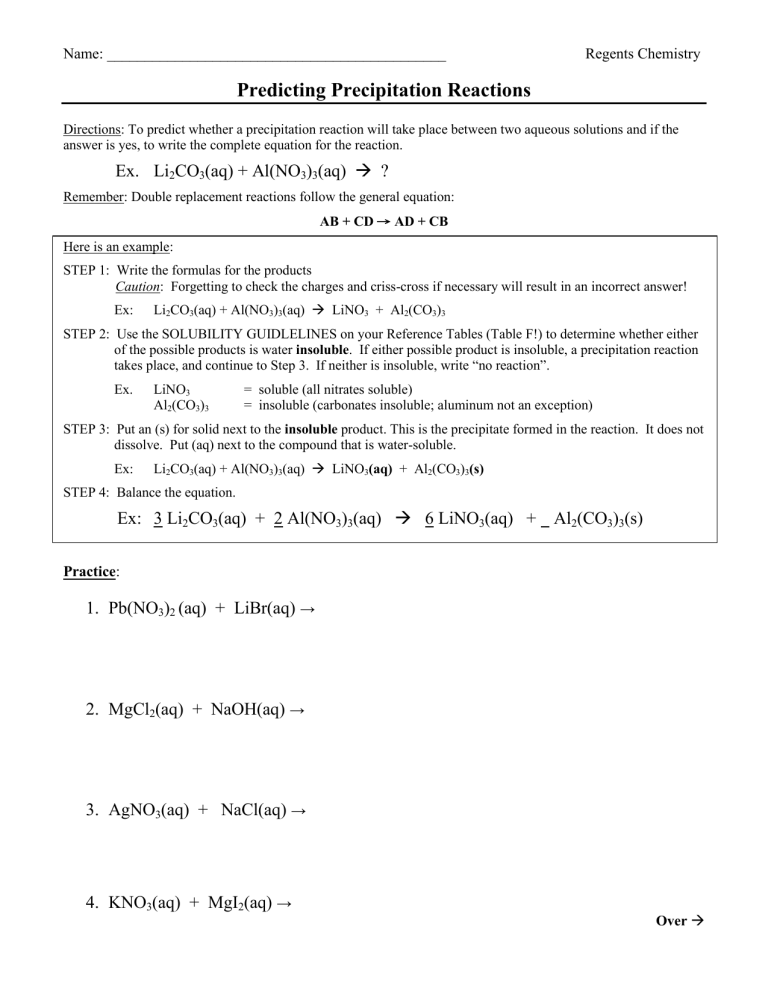
Name: _____________________________________________ Regents Chemistry Predicting Precipitation Reactions Directions: To predict whether a precipitation reaction will take place between two aqueous solutions and if the answer is yes, to write the complete equation for the reaction. Ex. Li2CO3(aq) + Al(NO3)3(aq) ? Remember: Double replacement reactions follow the general equation: AB + CD → AD + CB Here is an example: STEP 1: Write the formulas for the products Caution: Forgetting to check the charges and criss-cross if necessary will result in an incorrect answer! Ex: Li2CO3(aq) + Al(NO3)3(aq) LiNO3 + Al2(CO3)3 STEP 2: Use the SOLUBILITY GUIDLELINES on your Reference Tables (Table F!) to determine whether either of the possible products is water insoluble. If either possible product is insoluble, a precipitation reaction takes place, and continue to Step 3. If neither is insoluble, write “no reaction”. Ex. LiNO3 Al2(CO3)3 = soluble (all nitrates soluble) = insoluble (carbonates insoluble; aluminum not an exception) STEP 3: Put an (s) for solid next to the insoluble product. This is the precipitate formed in the reaction. It does not dissolve. Put (aq) next to the compound that is water-soluble. Ex: Li2CO3(aq) + Al(NO3)3(aq) LiNO3(aq) + Al2(CO3)3(s) STEP 4: Balance the equation. Ex: 3 Li2CO3(aq) + 2 Al(NO3)3(aq) 6 LiNO3(aq) + Al2(CO3)3(s) Practice: 1. Pb(NO3)2 (aq) + LiBr(aq) → 2. MgCl2(aq) + NaOH(aq) → 3. AgNO3(aq) + NaCl(aq) → 4. KNO3(aq) + MgI2(aq) → Over Circle the precipitate in the following reactions. 1. 3KOH(aq) + Fe(NO3)3(aq) → Fe(OH)3 + 3KNO3 2. K2SO4(aq) + Pb(NO3)2(aq) → 2KNO3 + PbSO4 3. 3CaCl2(aq) + 2Na3PO4(aq) → Ca3(PO4)2 + 6NaCl 4. Cu2SO4(aq) + BaCl2(aq) → 2CuCl + BaSO4
